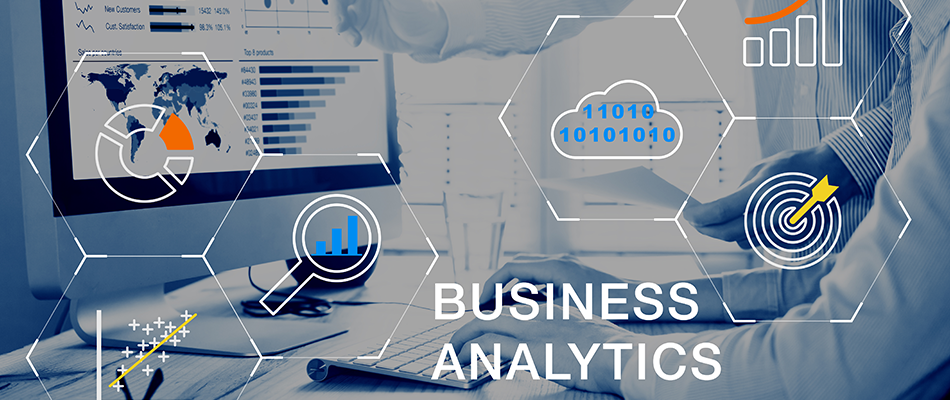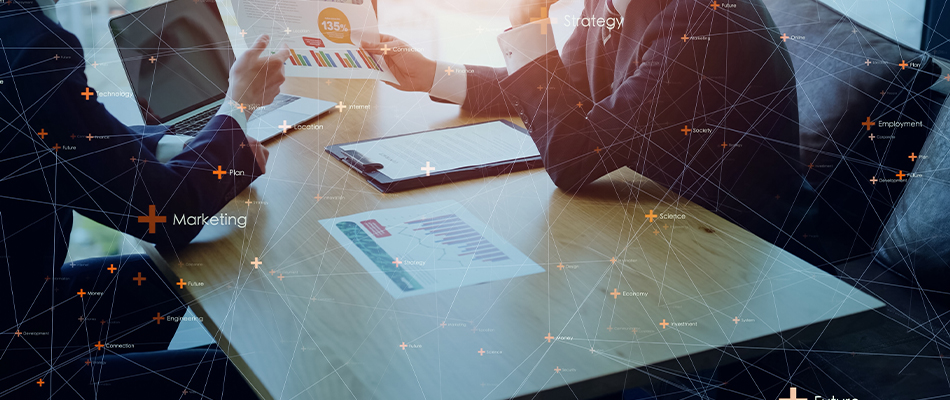The International Leadership Development Programme (ILDP) from Regenesys Business School comprises of a world-class, innovative and disruptive curriculum that develops leadership competencies for the new digital world, and includes modules in Data Science and Business Analysis.
You might be considering a career in digital technology. It is an ever expanding field, and there is great demand for competent persons with the right skills and aptitudes to take us into the Fourth and Fifth Industrial Revolutions. Enrolling in the International Leadership Development Programme will give you the head start to embark upon a career in the field. Let’s take a moment and consider how the programme deals with data science and business analytics.
At first glance, the two subjects seem very similar. But in practice they are very different roles. Whilst the International Leadership Development Programme will go on a deep dive into the intricacies of both, in this article we’ll examine each of these roles and see if either one is right for you, to take your career to the next level once you have graduated from the bespoke Regenesys Business School programme.
A simple way of explaining the difference is as follows: Data science is the study of data using statistical tools to generate key insights and relationships. It unpacks what the data “means.” Business analytics is the analysis of data to make key business decisions for the organisation.
Table of Contents
What is Business Analytics?
Business analytics is the collection, collation, processing, analysis , and study of business data to understand historic business performance and to gain insights for future business planning.
Business analytics uses various statistical/mathematical models, analytical modelling, quantitative analysis, predictive modelling, and iterative methodologies to extract meaningful information from data and convert them into business insights. It leverages data to solve complex business problems while enhancing productivity, boosting turnover, and promoting data-driven business planning.

What is Data Science?
Data science is an interdisciplinary field which decodes and demystifies large datasets (big data) using a combination of mathematics, statistics, computer science, information science, data analysis and machine learning. In the International Leadership Development Programme, participants will become acquainted with techniques, processes, algorithms, and systems to extract valuable insights from structured, semi-structured, and unstructured data.
Data Science takes place in five stages:
- Define the problem you wish to analyse.
- Capture the data: data acquisition, data entry, data extraction, and signal reception.
- Maintain the data: data warehousing, data architecture, data cleansing, and data processing.
- Process the data: data mining, data modelling, clustering/classification, and data summarisation.
- Analyse the data: predictive analysis, qualitative analysis, regression, and text mining.
- Communicate the results: data visualisation, data reporting, business intelligence, and decision making.
Here is summary are the differences between data science and business analytics, taken from the module of the International Leadership Development Programme:
| Data Science | Business Analytics |
| It is the science of data study using statistics, algorithms and technology | It is the statistical study of business data |
| Uses both structured and unstructured data | Uses mostly structured data |
| It is a combination of traditional analytics practices with sound computer science knowledge including coding | It is oriented more towards statistics and does not involve much coding |
| Top industries where data science finds its applications are:
· Technology · Finance · E-commerce · Academic | Top Industries where business analytics finds its applications are
· Finance · Technology · Marketing · Retail |
| The future applications of data science would be witnessed in artificial intelligence and machine learning | The future applications of business analytics will be in cognitive analytics and tax analytics |
| Data science results give insights but usually not used for making business decisions | Business analytics results are vital to the key decision makers |
| Studies trends and patterns | Works on specific business problems |
Table 2
The roles of business analyst and data scientist are similar in many ways. Data continually drives organisations. They both work with data that involves data gathering, inference, derivation and data modelling. Data scientists and business analysts often work collaboratively in the same organisation to understand and implement strategies. But data in itself doesn’t have much value until it is analysed and categorised.
Business analysts are involved with understanding and planning for the needs of a business and assisting in the implementation of those changes. They form a bridge of communication between various departments in a business organisation to execute any business plan.
As participants in the International Leadership Development Programme will discover, data scientists develop algorithms and draw inferences from data. Data science discovers the complex data patterns in complex and very large data sets.
Typical business analyst tasks
- Develop business cases, usage scenarios and solution blueprints.
- Engage with existing and prospective customers and help them to adopt products and solutions to meet their business requirements
- Ensure consistent growth in product awareness, adoption and usage by customers
- Lead workshops with IT and business users to understand the client’s business objectives and system/application needs
- Provide regular and adequate end user feedback to the product team
- Showcase product and solution concepts via presentations, demos, user interaction and effective documentation
Typical data scientist tasks
- Apply machine learning using deep technical expertise to solve real world business problems
- Build data science capabilities and automate reporting for weekly business metrics, identify areas of opportunity to automate and scale ad-hoc analyses
- Collaborate with other team members both within and outside the data science team to create and deliver world class data science products
- Partner with the product team to create key performance indicators and new methodologies for measurement
- Prepare monthly sprint plans, prioritising requests from partner product teams
- Translate data into practical insights for stakeholders
Applications of Business Analytics
Here are some examples of business analytics in action, the doors of which will be opened to you after qualifying from the Regenesys Business School’s International Leadership Development Programme:
- Finance
Business analytics is required for investment banking, portfolio management, financial planning, budgeting, forecasting, etc. Example: a particular share can be tracked and analysed, and advice given to clients.
- Marketing
Business analytics is used to study buying patterns of consumer behaviour, analysing trends, identifying the target marketds, devising advertising campaigns and forecasting demand. Example: analyse the effectiveness and impact of a marketing strategy on customers.
- Human Resources
Business analytics makes use of data to find information regarding the educational background of high performing candidates, employee turnover rate, number of years of service of employees, age, gender, etc. Example: predict employee turnover rates and generate information for retention strategies.
- CRM
Business analytics analyses the key performance indicators, which supports decision making and strategies to boost customer relationships. Data on demographics, and data about other socio-economic factors, purchasing patterns, and lifestyle, play a part here. Example: predicting customer preferences in a particular market segment.
Manufacturing
Business analytics has strong application in supply chain management, inventory management, measurement of performance targets, risk mitigation plans, and efficiency improvements. Example: historical data on the performance of a machineis used to evaluate the performance of the machinery and decide whether costs of maintaining the machine will exceed the cost of buying a new machinery.
- Credit Card Companies
Business analytics interrogate customer credit card transactions to determine financial health, life style, preferences of purchases, and behavioural trends. Example: predict the choices of the consumers, their spending pattern, and preferences over buying the competitor’s products.

Applications of Data Science
Here are some examples of data science in action:
- Weather forecasting
Accurate weather forecasting requires the analysis of massive amounts of data. Data is collected from satellites, radars, ships, and aircraft to build models that forecast weather and predict extreme weather events with great precision.
- Healthcare
Medical image analysis, cancer detection and care, drug discovery, disease prediction and prevention, monitoring patient health are applications of data science in healthcare.
- Cyber security
Big data is subject to security risks. Data science is deployed to mitigate cyber security risks and cyberattacks.
- Fraud and risk
Data science utilises big data and data science techniques to identify patterns of fraudulent transactions and predict the next fraud in progress. It is particularly applicable in the prevention of money laundering.
- Inventory management
Machine learning algorithms analyse logistics data and detect patterns and correlations among purchases. This helps create strategies to increase sales, confirm delivery schedules and manage inventory.
- Self-driving cars
Driverless mobility is the classic example of data science in action. An intelligent vehicle collects data in real-time from its surroundings through radar, cameras, and lasers to create a visual map of its surroundings. Using this data and advanced machine learning algorithms, it ‘drives’ the vehicle, taking crucial driving decisions like turning, stopping, speeding, and parking.
Becoming a business analyst or data scientist
If you wish to pursue a career as a data scientist or business analyst, then the International Leadership Development Programme is the ideal course to prepare you for that path. Business analysis and data science are key core modules in the programme, and with the knowledge and networks you will glean after undertaking the programme, you are certain to acquire the fundamental skills needed for a career to flourish in either.
By now your curiosity has been awakened. You want to find out more about these exciting disciplines and even consider training in the field. Regenesys’ International Leadership Development Programme aligns perfectly with this aim.
Don’t be left behind in the Third Industrial Revolution – future-proof yourself now!
The intense International Leadership Development Programme explores cutting-edge knowledge, global trends and best practice in digital transformation, entrepreneurship, strategy, and innovation from the fastest-growing companies in the USA.
Participants are exposed to applied learning using innovative learning techniques, master classes, exposure to giants of industry, focused networking opportunities and commercial
matching to sector-level opportunities. The programme is facilitated by global faculty comprising experts in specialised fields as well as top business leaders.






